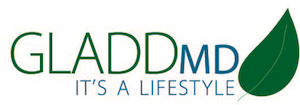I am fascinated by technology and the people and companies that are creating amazing things on a daily basis.
While I love taking care of patients and helping figure out ways to improve health, I also love creating things and am itching to be a part of a technology startup. The kind with bean bag chairs, white boards and lots of creativity flowing daily. It's why I created GladdMD, to free myself some to work on other projects. We're working on a new site, going to be doing some video blogging with the goal of delivering medical school to the people. It's imperative that people learn to take care of themselves and knowledge is empowering. I am also getting ready to start working on Mytavin.com, a tool to help people figure out which supplements, if any, they should be taking.
I have been recently been exposed to guys like
Aza Raskin, who was the creative behind Firefox and recently started Massive Health (hope to meet with you soon in SF),
Gary Vaynerchuk of Wine Library TV and now the Daily Grape and recently heard
Zach Klein speak in Fort Wayne (he's from here). Zach was cofounder of Collegehumor.com and vimeo.com.
Learning the stories of success from these pioneers and hearing Zach talk about how much creating is still left to do, the future is wide open for progressive, out-of-the-box thinkers that have ideas and ways of improving just about anything. In a way, that's all of us. Unfortunately, so many of us remain cozy in our day to day lives and never creep outside the box. We all have ideas, all the time. Technology and and the tools available to today allow anyone to bring that idea to the public and make a reality.
So I was thinking about my kids and the future that is being laid out for them. The worksheet my son brings home that is created by the state of Indiana to do nothing but help him pass standardized tests. How do you stimulate creativity? How do you start building a future Zach Klein? It started yesterday with this discussion:
My 7 year old asked when we were going to start his free range eggs business that we talked about last year. We talked for awhile about what it would entail: purchase chickens, buy the materials and spend the time to build a coop, buy feed, research the how-to's and how we would market it. Then I asked him, "What happens when we go to the lake, or out of town?" He smartly replied that he would have to hire someone. He made the connection that this would cost money and eat into revenues. I was trying to imprint the lesson of scalability and also creating a lifestyle to balance with your work. He can see that there are some real limitations to the egg business now (not that it isn't an amazing lesson and experience for a child). So then I presented another option. "Sam, what if instead you learned about computers and were able to create something really helpful and cool that people used. What if it made money because people paid to use it or simply because a lot of people liked it?" I asked what happens now if he goes out of town. He answered that the business still makes money, and he could take his computer with him and check on things from lake. Atta boy.
Enter Scratch. So, motivated by the idea that there are greater opportunities for my son in the future if he learns to channel his creativity in technology versus learning how to throw a curveball (not to say I won't still promote sports, just give up early and realistically on professional aspirations), I searched for ways that kids can start to learn coding and programming. MIT built Scratch to do just that. It's a basic tool that let's kids program different cartoons or games with simple language and tools. He loves it. Talked about it for two day and finally tonight we logged in and set up his profile. He spent 90 minutes creating sounds, pictures and animations with a huge smile. I am happy and proud to present Sam's first project:
Funny Show. The future is bright!
 Sam's Funny Show
Sam's Funny Show
 GladdMD On
GladdMD On  Thursday, May 26, 2011
Thursday, May 26, 2011 




